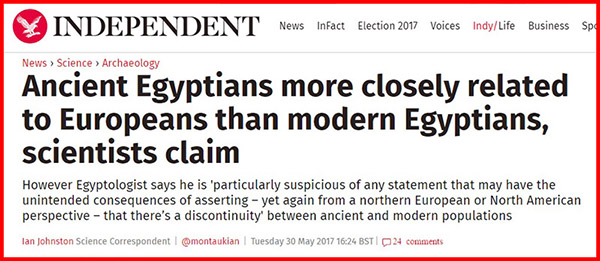A new analysis of DNA from ancient Egyptian mummies, carried out by scientists from the University of Tuebingen in Germany, has revealed that ancient Egyptians were indeed European—and that the present-day Egyptian population is a mixed race group with a massive sub-Saharan element.

The study, titled “Ancient Egyptian mummy genomes suggest an increase of Sub-Saharan African ancestry in post-Roman periods” and published in the journal Nature Communications 8, Article number: 15694 (2017) doi:10.1038/ncomms15694, looked at genetic differentiation and population continuity over a 1,300-year timespan, and compared these results to modern populations.
The study concluded:
“When comparing this pattern with modern Egyptians, we find that the ancient Egyptians are more closely related to all modern and ancient European populations that we tested, likely due to the additional African component in the modern population observed above. By computing f3-statistics, we determined whether modern Egyptians could be modelled as a mixture of ancient Egyptian and other populations. Our results point towards sub-Saharan African populations as the missing component, confirming the results of the ADMIXTURE analysis.”
The researchers successfully recovered and analyzed ancient DNA from Egyptian mummies dating from approximately 1400 BCE to 400 CE. The team sampled 151 mummified individuals. In total, the authors recovered mitochondrial genomes from 90 individuals, and genome-wide datasets from three individuals.
The study found that ancient Egyptians were most closely related to ancient European populations “in the Levant,” (that is, the ancient “Old Mediterranean” whites) and Neolithic populations from the Anatolian Peninsula and Europe.
